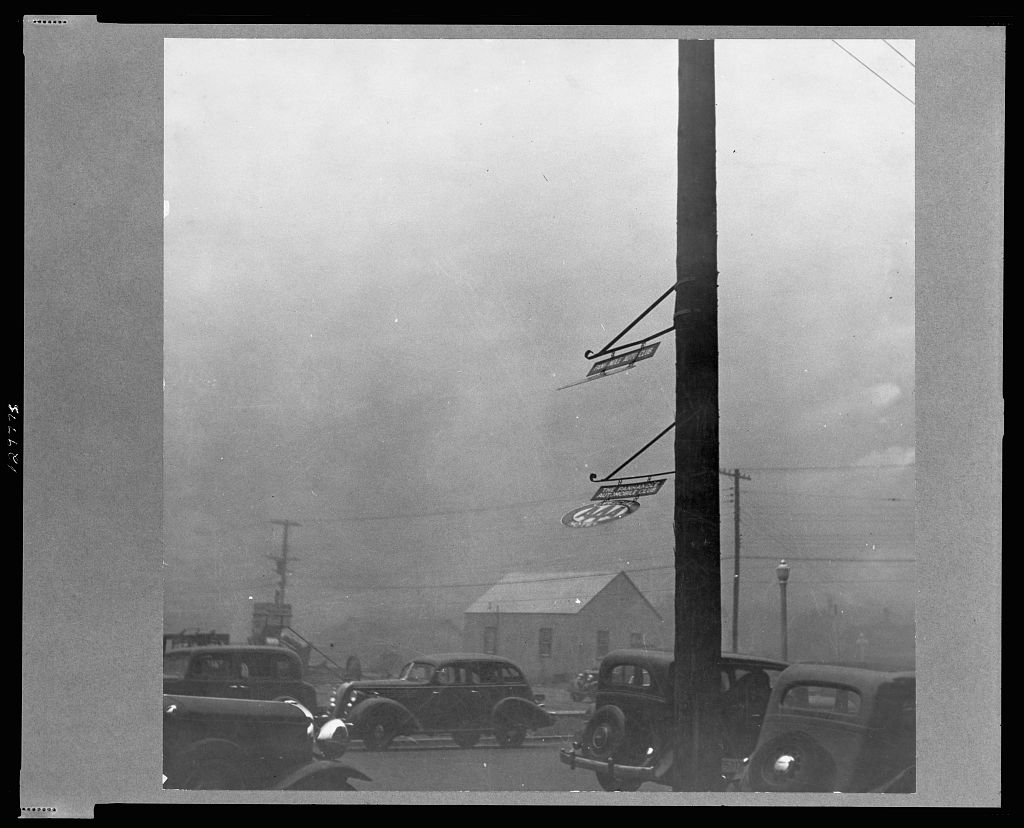There were many photos that grasped significant moments in American history. One of these photos was captured by Arthur Rothstein where he emphasized an event that contributed to one of the worst time periods known as the Great Depression leaving many Americans physically, mentally, and emotionally shattered. In brief, Arthur Rothstein, born on July 17th, 1915, and passed away on November 11th, 1985, was an American photographer. Moreover, he was one of the most notable photojournalists in America. His career spanned out to about five decades and used his expertise in the media to inform people and bring awareness to such subjects as the Dust Bowl, in this case.
The Dust Bowl occurred during one of the worst times in American History known as the Great Depression, which lasted from 1929 to 1941. Furthermore, the stock market crash of 1929 really exposed the economy, and therefore collapsed. Unemployment rates were striking high, and thousands of banks and businesses closed. Because everything closed, citizens were significantly affected, which led to the loss of copious amounts of homes. People were struggling, and, at that time, President Herbert Hoover did not provide government aid as he was oblivious of how severe the crisis was. It was difficult for citizens to see even a glimpse of hope.
It did not get better for any region of the nation, and it got even worse for the Southern plains of the Midwest. There were extreme droughts which led to the destruction of crops and, by default, the destruction of income. From a psychological perspective, people were starting to feel depressed and isolated. One example that captured the mental state that such citizens had was that of a woman named Martha Schmidt Friesen. She was a farm woman who had a daily routine of working in the farm with her crops. However, her life changed drastically as the Dust Bowl forced a myriad of individuals to move out from Kendal, Kansas. It became a ghost town and so her journal entries dictated, “The older Friesen’s were not just alone in their own home, but increasingly alone in their township.” Not only that, but the precipitation rate was at its lowest. In fact, in 1934 the annual precipitation was below 70%, which impact the soil and crops. Crop failures were also at their highest as they obtained a percentage of more than 60%. For example, in Cimarron Country, Oklahoma, wheat production collapsed and fell from an average of 13.1 bushel per acre in the 1920s and then decreased significantly to 0.9 bushels per acre in the 1930s. Overall, the drought led to loss of rich soil and not only was there lack of rainfall, but the high gust of winds moving the dry topsoil is what made these dust storms roam around such regions, hence the name “The Dust Bowl.”
One of the most crucial events in U.S History was captured by Rothstein, which was the Dust Bowl. In fact, he captured one of the many regions that were affected by the storm. This photograph was taken by him in Amarillo, Texas during the year 1936. In this photo, viewers can see the very dark gray clouds that covered this region of Texas. The dust is so thick that one can only see that one white house. However, if one looks very closely at the right and left side of the photo there are other houses next to it. This really captures how thick the dust was and how dangerous the air quality was for the citizens. The signs on the land post look like they are getting blown away due to the high gust winds that came from the dust storm. Furthermore, there are a myriad of automobiles parked, which can also infer that citizens were either quarantined in their houses or left all their belongings and migrated to other parts of the country, hence the Great Migration. Overall, Rothstein captured a less zoomed in photo to emphasize the impact of the storm, as whole, in the city. Not only that, but the photo lacks color, which demonstrates how dark the clouds were and, therefore, shows the air pollution that devastated the community. In fact, as mentioned earlier, Rothstein’s purpose of photo journaling was to inform people, and that is exactly what he accomplished. He made people aware of the struggle of Americans during that time and spread awareness to other parts of the nation where some may not have known what was going on, and answered the lingering question of why so many people were migrating to their states. Overall, this photo captures the catastrophe that happened during the Dust Bowl and the impact that it had on its citizens.
- David E. Shi, America: A Narrative History (Brief Twelfth Edition) (Vol. Volume 2 12th ed. W.W. Norton and Company, 2022.
- “Arthur Rothstein.” International Center of Photography (ICP) | International Center of Photography. Accessed November 12, 2023. https://www.icp.org/browse/archive/constituents/arthur-rothstein?all/all/all/all/0.
- “Arthur Rothstein,” Photography and the Great Depression, December 5, 2011, https://lis471.wordpress.com/arthur-rothstein/#:~:text=It%20was%20with%20this%20aim,living%20in%20the%20Great%20Plains.
- Myron P. Gutman, Daniel Brown, Angela R. Cunningham, James Dykes, Susan Hautaniemi Leonard, Jani Little, Jeremy Mikecz, Paul W. Rhode, Seth Spielman, and Kenneth M. Sylvester. “Migration in the 1930s: Beyond the Dust Bowl.” Social Science History 40, no. 4 (2016): 707–40. https://www.jstor.org/stable/90017886
- Clayton R. Koppes, Review of Dusty Volumes: Environmental Disaster and Economic Collapse in the 1930s, by Paul Bonnifield and Donald Worster. Reviews in American History 8, no. 4 (1980): 535–40. https://doi.org/10.2307/2701281.
- Pamela Riney-Kehrberg, “Separation and Sorrow: A Farm Woman’s Life, 1935-1941.” Agricultural History 67, no. 2 (1993): 185–96. http://www.jstor.org/stable/3744056
